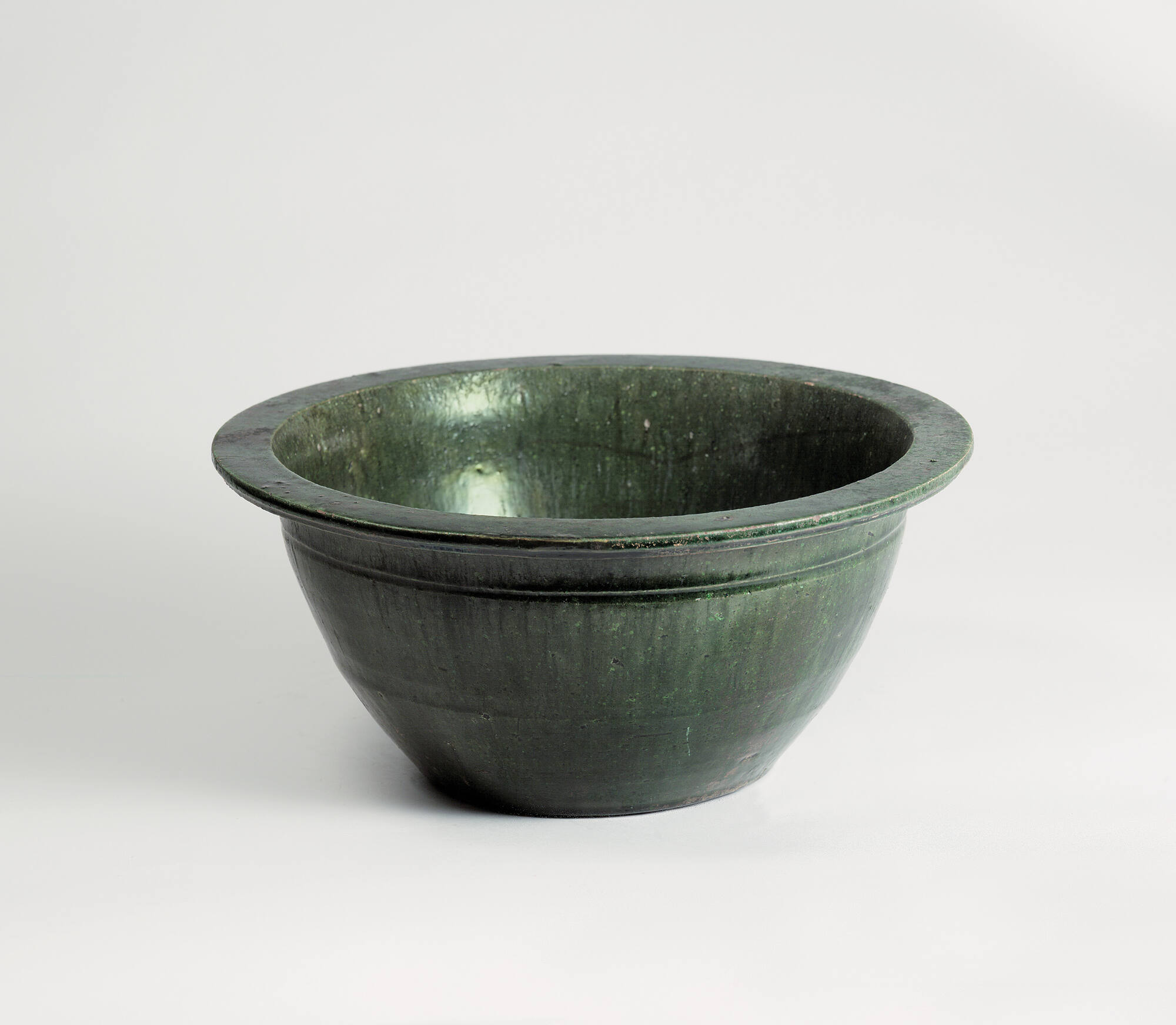
Object Details
Culture
China, Henan province
Eastern Han dynasty (AD 25-220)
Date
1st or 2nd century
Medium
Lead-glazed earthenware
Dimensions
Height: 5 inches (12.7 cm)
Diameter: 10 3/4 inches (27.3 cm)
Credit Line
Gift of F. Eunice Shatzman, Class of 1949, and Herbert F. Shatzman
Object
Number
2008.072.036
Johannes Hellner was a Swedish diplomat and businessman who served as Minister for Foreign Affairs f(…)
Johannes Hellner was a Swedish diplomat and businessman who served as Minister for Foreign Affairs from 1917 to 1920. Hellner, like many men of his social circle including Crown Prince Gustav VI, also supported archaeological research, particularly in China. In the 1920s and ’30s, he collected Chinese ceramics including this cooking vessel. His collector’s mark exists on the bottom of this object: an intertwined “J” and “H” in redink written on a golden-edged, octagonal sticker, and sometimes accompanied by an intertwined “J” and “H” painted in black directly on the object.This object, with its wonderful collection of marks and labels still extant, came to us with a large gift of Chinese ceramics, made by Eunice Shatzman, Class of 1949, and her husband, Herbert Shatzman. (“This is no Less Curious: Journeys through the Collection” cocurated by Sonja Gandert, Alexandra Palmer, and Alana Ryder and presented at the Johnson Museum January 24 – April 12, 2015)BRIEF DESCRIPTIONThis is a ceramic imitation of a bronze cooking vessel, and was placed in a Han tomb to provide for the needs of the soul of the entombed individual.WHERE WAS IT MADE?This model of a cooking vessel was made in present-day Henan province.HOW WAS IT MADE?Made on a potter’s wheel, this vessel was then glazed with lead glaze containing copper oxide, imparting a brilliant green color to the glaze. The vessel is completely glazed inside and out and was fired right-side up in the kiln.HOW WAS IT USED?This model of a pen was not made to be used by a living person, but by the soul of the deceased with whom it was buried. Life-sized vessels and utensils were provided in Han tombs for use by the po, the part of the soul that remained in the tomb.The bronze pen on which this stoneware version is based was a precursor to the modern wok; its narrow base was meant to fit snugly into the opening of the domed burner of a stove, designed for creating a chimney effect to facilitate quick, high-heat cooking. Green lead-glazed models of stoves are frequently found in excavated tombs of the Eastern Han period, along with similar pen. To see an example of such a stove in the Johnson Museum’s collection, search for object number 97.032.031 in the keyword search box. WHY DOES IT LOOK LIKE THIS?The handsome, precise form of the vessel is based on a common bronze prototype and the pristine glaze has a fine luster and rich color to evoke the more costly material.












